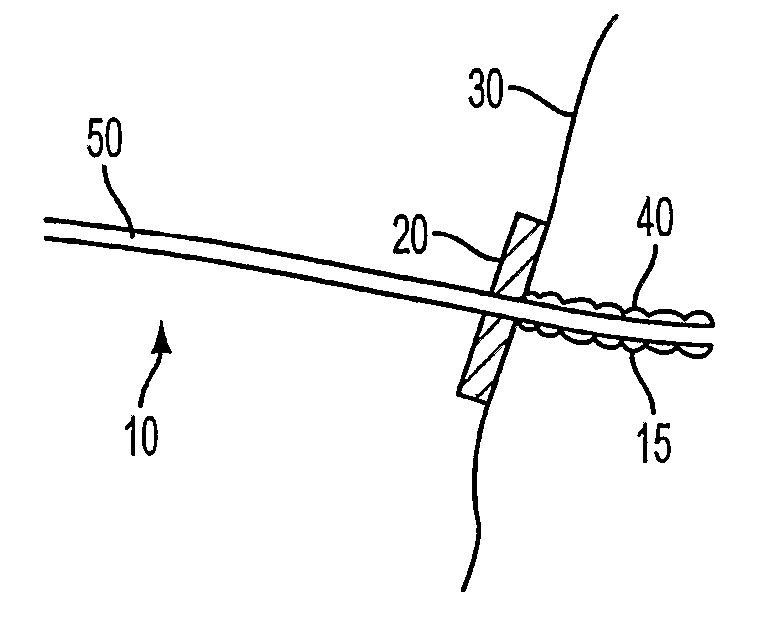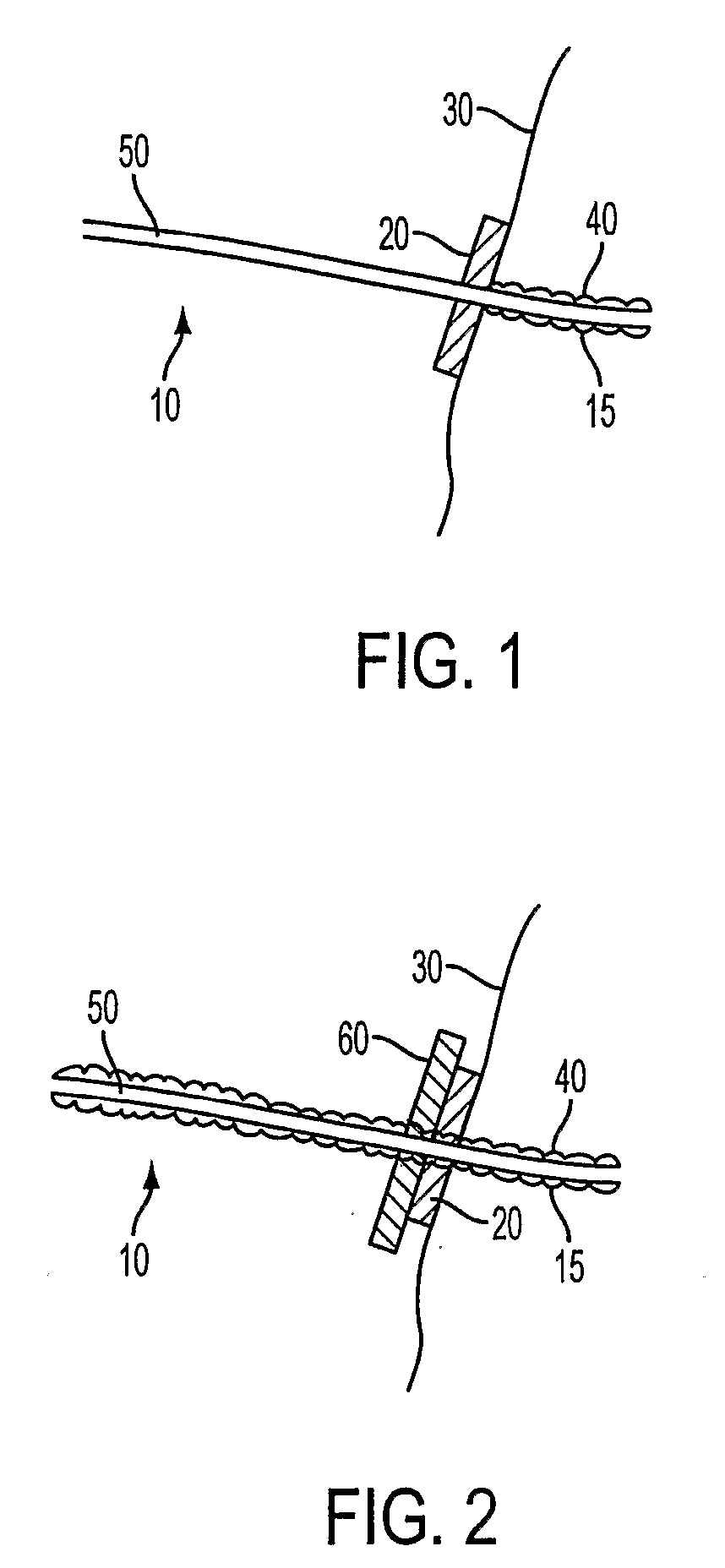Antimicrobial Needle Coating For Extended Infusion
a technology of antimicrobial needles and infusion, which is applied in the field of extended infusion of antimicrobial needles, can solve the problems of contaminating the site, affecting the detection properties of sensors, and contaminating the device, so as to resist or reduce both protein absorption and infectious formation, and extend the patency of the devi
- Summary
- Abstract
- Description
- Claims
- Application Information
AI Technical Summary
Benefits of technology
Problems solved by technology
Method used
Image
Examples
example 1
[0128]
(733-04C1)Acetonitrile6.01 grams 68%Denatured ethanol2.03 grams 23%Benzalkonium heparinate0.15 grams1.7%PEG 33500.60 grams6.8%
[0129] The needles with this coating composition were tested for a total of 11 insertion cycles, and resulted in an average insertion time of 4.5 days.
example 2
[0130]
(733-19C)Acetonitrile24.0 grams 69%Denatured ethanol8.01 grams 23%Irgasan (TRICLOSAN)0.20 grams0.6%2-bromo-2-nitropropane-1,3-diol0.10 grams0.3%(BRONOPOL)PEG 33502.44 grams7.0%
[0131] The needles with this coating composition were tested for 14 insertion cycles, and resulted in an average insertion time of 4.4 days.
example 3
[0132]
(733 19D)Acetonitrile24.0 grams68.7% Denatured ethanol8.01 grams22.9% Irgasan (TRICLOSAN)0.20 grams0.6%2-bromo-2-nitropropane-1,3-diol0.10 grams0.3%(BRONOPOL)PEG 33502.44 grams7.0%Disodium EDTA0.17 grams0.5%
[0133] The needles with this coating composition were tested through 9 insertion cycles, and 5 resulted in an average insertion time of 5.6 days.
PUM
| Property | Measurement | Unit |
|---|---|---|
| Fraction | aaaaa | aaaaa |
| Fraction | aaaaa | aaaaa |
| Fraction | aaaaa | aaaaa |
Abstract
Description
Claims
Application Information
 Login to View More
Login to View More - R&D
- Intellectual Property
- Life Sciences
- Materials
- Tech Scout
- Unparalleled Data Quality
- Higher Quality Content
- 60% Fewer Hallucinations
Browse by: Latest US Patents, China's latest patents, Technical Efficacy Thesaurus, Application Domain, Technology Topic, Popular Technical Reports.
© 2025 PatSnap. All rights reserved.Legal|Privacy policy|Modern Slavery Act Transparency Statement|Sitemap|About US| Contact US: help@patsnap.com


